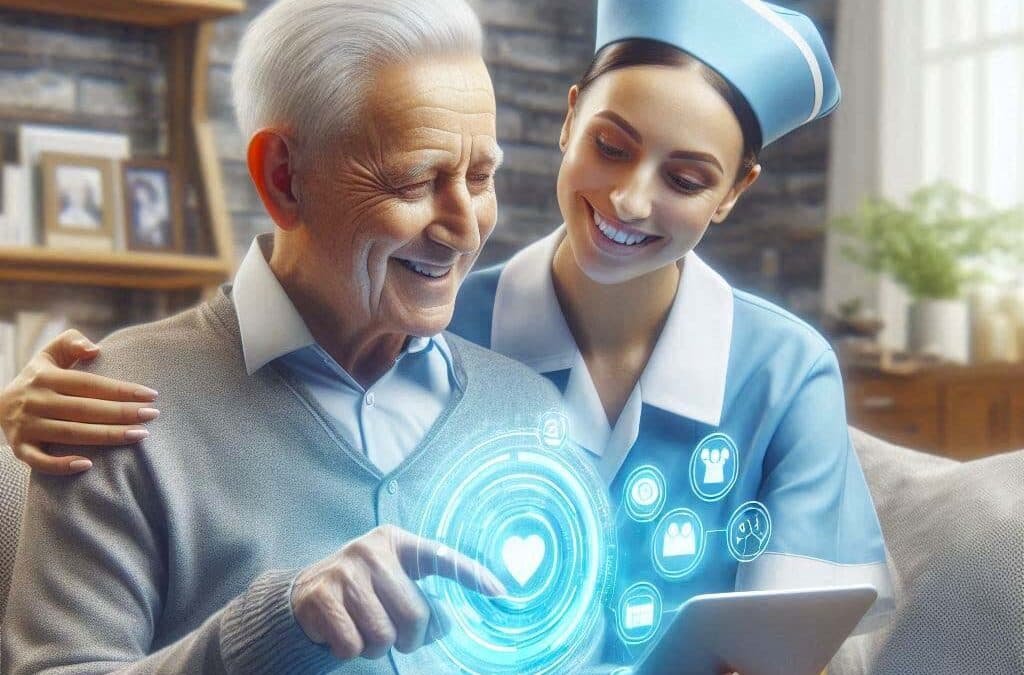As the global population ages, the demand for senior home care services is experiencing an unprecedented surge. By 2024, the integration of technology in home care practices is not just a convenience; it’s becoming a necessity. This article delves into how technological innovations are revolutionizing the caregiving process, offering a beacon of hope for both seniors and caregivers.
The Rise of Remote Patient Monitoring
Remote patient monitoring (RPM) systems represent a significant leap forward in home care. These systems enable caregivers to monitor seniors’ health metrics in real-time, ensuring that vital signs such as heart rate, blood pressure, and oxygen saturation levels are within safe thresholds. RPM technology can alert caregivers to potential health issues before they become emergencies, facilitating prompt intervention and reducing hospital readmissions.
Digital Tools: A Helping Hand
Digital tools are simplifying the complexities of caregiving. From scheduling software that organizes visits and tracks caregiver hours to mobile applications that provide medication reminders, these tools are essential in streamlining operations. They not only improve the efficiency of care agencies but also enhance the quality of care provided to seniors.
Artificial Intelligence: The Smart Companion
Artificial intelligence (AI) is the cutting-edge component in the caregiving toolkit. AI-powered chatbots can offer companionship and conversation, helping to alleviate feelings of loneliness and isolation among seniors. More advanced AI systems can analyze patterns in seniors’ behavior and predict potential health risks, enabling proactive care management.
The Impact on Care Agencies
With the aid of technology, care agencies can manage more clients effectively. By automating routine tasks and utilizing data analytics, agencies can optimize their resources and focus on providing personalized, compassionate care. Technology also opens up opportunities for remote caregiving, where professionals can offer guidance and support from afar, expanding the reach of home care services.
Challenges and Considerations
Despite the benefits, the integration of technology in senior home care is not without challenges. Privacy concerns, the digital divide, and the need for training are significant hurdles that must be addressed. Ensuring that both caregivers and seniors are comfortable and proficient with these technologies is crucial for their successful adoption.
Real World Examples of Technology Used in Senior Home Care in 2024
The integration of technology in senior home care has seen several successful real-world examples, enhancing the quality of life for seniors and streamlining the caregiving process. Here are some notable instances:
- Smart Home Integration: In the UK, care homes have adopted smart devices like thermostats from Nest and Hive, allowing caregivers to regulate temperatures remotely to ensure comfort for residents. Smartphones and tablets have become lifelines for residents to stay connected with family and provide entertainment.
- Artificial Intelligence (AI): AI has been introduced into care homes to monitor patients and predict the need for early intervention. This technology supports a 24/7 care ecosystem and streamlines coordination between healthcare providers.
- Virtual Reality (VR): Some care homes are experimenting with VR to assist in physiotherapy, allowing residents to virtually visit sentimental locations and engage in guided exercises.
- Acoustic Monitoring: This evolving technology is used to monitor sounds in care homes, helping to ensure the safety and well-being of residents by detecting unusual noises that could indicate falls or other emergencies.
- Wearable Technology: Devices like smart scales, blood pressure monitors, and fitness trackers integrate into the smart home ecosystem, providing real-time health data to healthcare providers and family members.
- Electric Wheelchairs and Stairlifts: Tech integration has empowered individuals to perform daily activities with less assistance, enhancing mobility and independence within the home environment.
These examples demonstrate how technology is not just a tool for convenience but a transformative element in providing compassionate and efficient care to the elderly.
The integration of technology in senior home care is transforming the senior home care industry, offering innovative solutions to meet the growing demands of an aging population. As we move forward, it is imperative that care agencies embrace these changes, ensuring that seniors receive the best possible care in the comfort of their homes.


 RSS - Posts
RSS - Posts